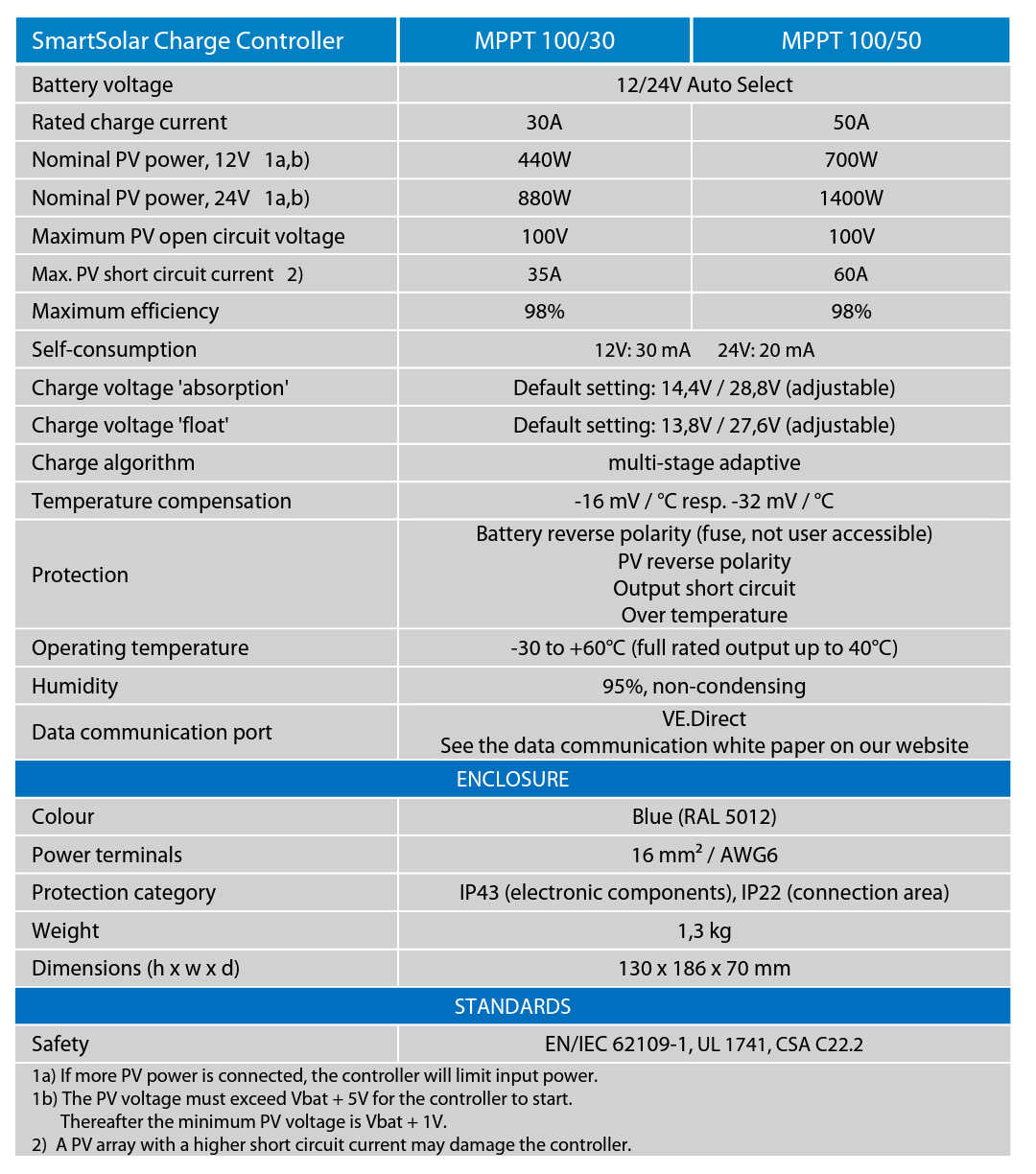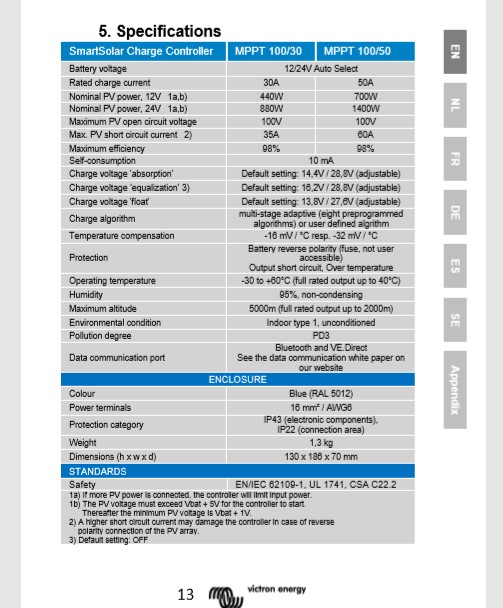Hello there, the smartsolar 100/30 datasheet says:
1a) If more PV power is connected, the controller will limitinput power
2) A PV array with a higher short circuit current may damage the controller
Am i the only to see a contradiction here ? Maybe 1a) holds for high voltage and current within limit (serial connection) ? My understanding of 2) is that several PV in parallel will damage the controller. Or maybe that's me begin stupid this morning ... Anyone cares to clarify ? thanks !



 this manual tells the same as @Klim8Skeptic found, which sounds for me quite clear and logic (but please confirm) --> I undestand it as: The MPPT is able to regulate PV Voltage/ Currents in order to find best performance... however, in case of a bright summer day in combination with more PV power installed then the rated PV-Power of the charge-controller, the MPPT needs to limit its current to the maximum (e.g. 15 Amps for the MPPT 75/15) and the voltage might climb to Voc voltages, resulting in a fixed/ limited maximum output POWER which is again limited by the used charge-controller in combination with a certain battery-bank voltage.
this manual tells the same as @Klim8Skeptic found, which sounds for me quite clear and logic (but please confirm) --> I undestand it as: The MPPT is able to regulate PV Voltage/ Currents in order to find best performance... however, in case of a bright summer day in combination with more PV power installed then the rated PV-Power of the charge-controller, the MPPT needs to limit its current to the maximum (e.g. 15 Amps for the MPPT 75/15) and the voltage might climb to Voc voltages, resulting in a fixed/ limited maximum output POWER which is again limited by the used charge-controller in combination with a certain battery-bank voltage. So, @Lucian Popescu (Victron Energy Staff), are your sure about your comment "Hi, input current is also very important, don't go above the specified value because you will blow the mosfets from the MPPT", please confirm internally, or could you explain in more detail, why the MPPT would not be able to limit it's PV-current to the alowable max. value? , because I do not believe (up till now) that it will blow its MOSFETS.... (I could change my mind, but need better clarification about this matter :) !)
So, @Lucian Popescu (Victron Energy Staff), are your sure about your comment "Hi, input current is also very important, don't go above the specified value because you will blow the mosfets from the MPPT", please confirm internally, or could you explain in more detail, why the MPPT would not be able to limit it's PV-current to the alowable max. value? , because I do not believe (up till now) that it will blow its MOSFETS.... (I could change my mind, but need better clarification about this matter :) !)